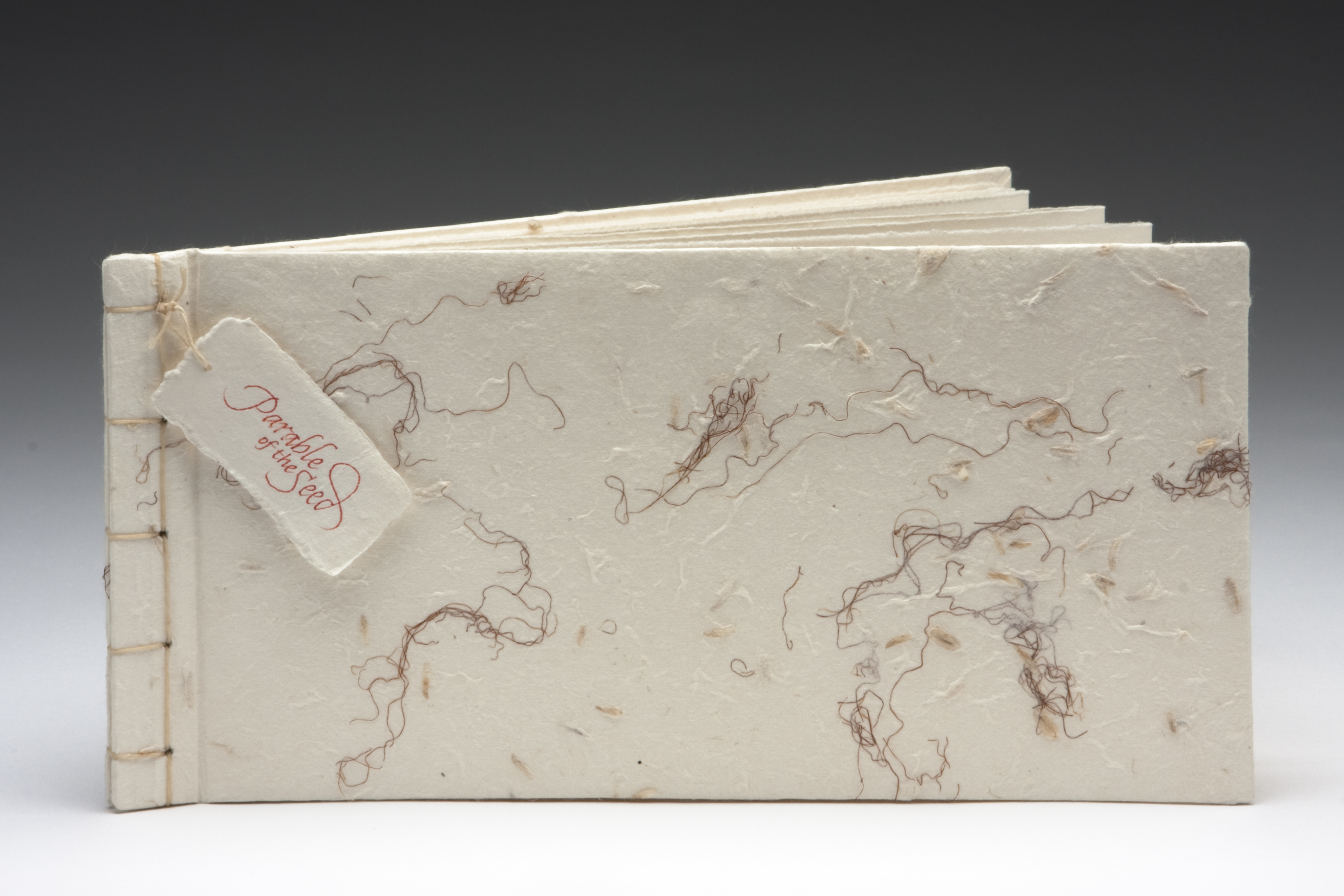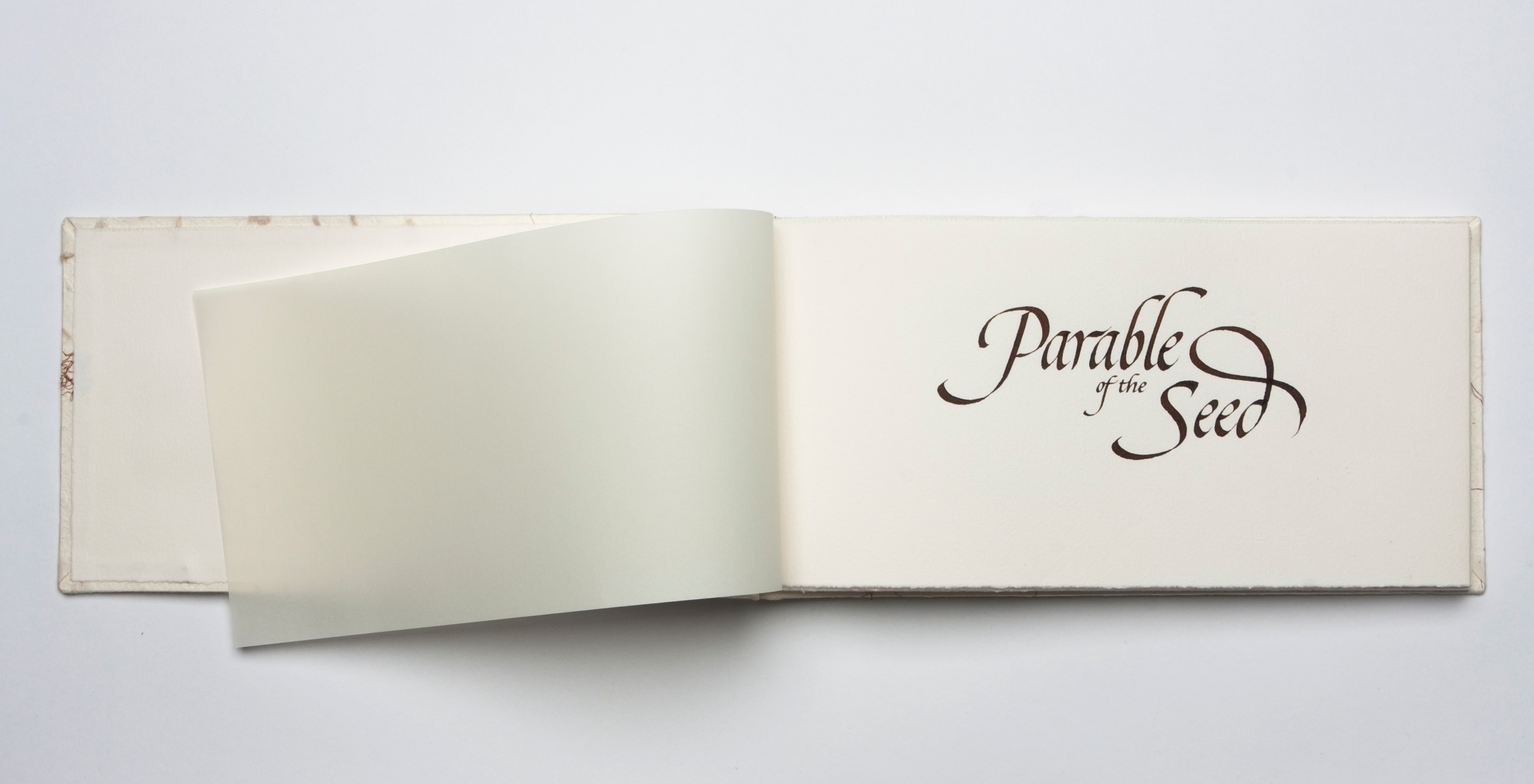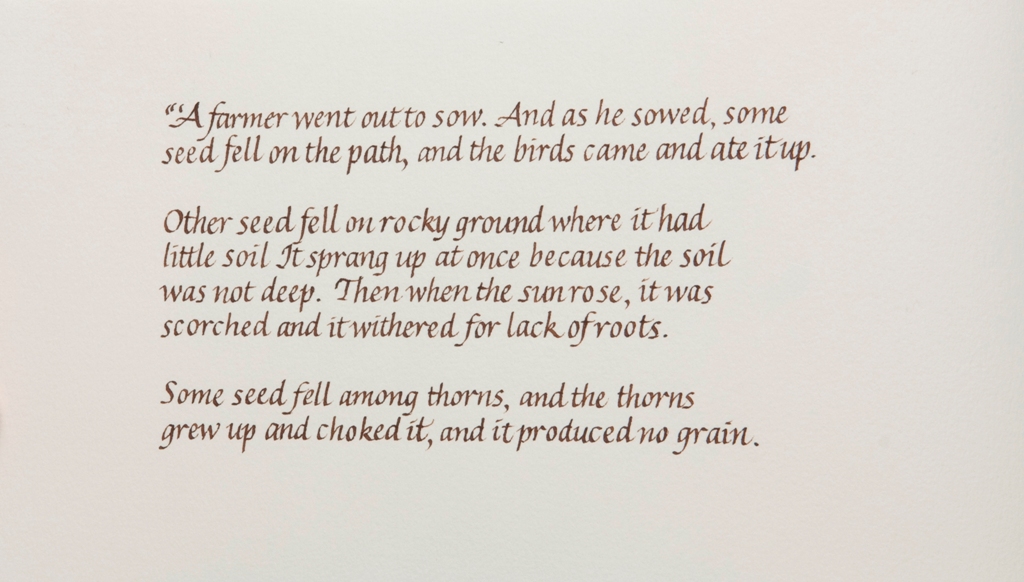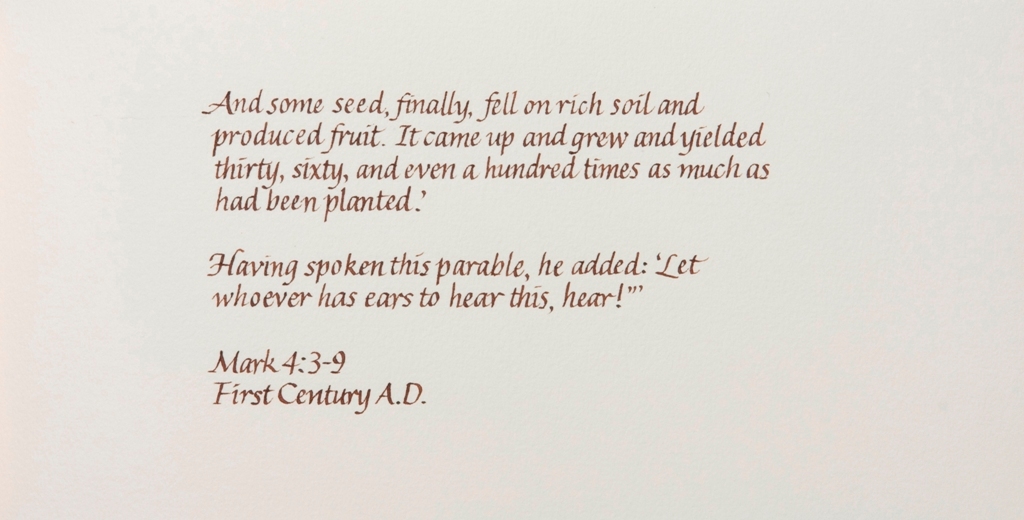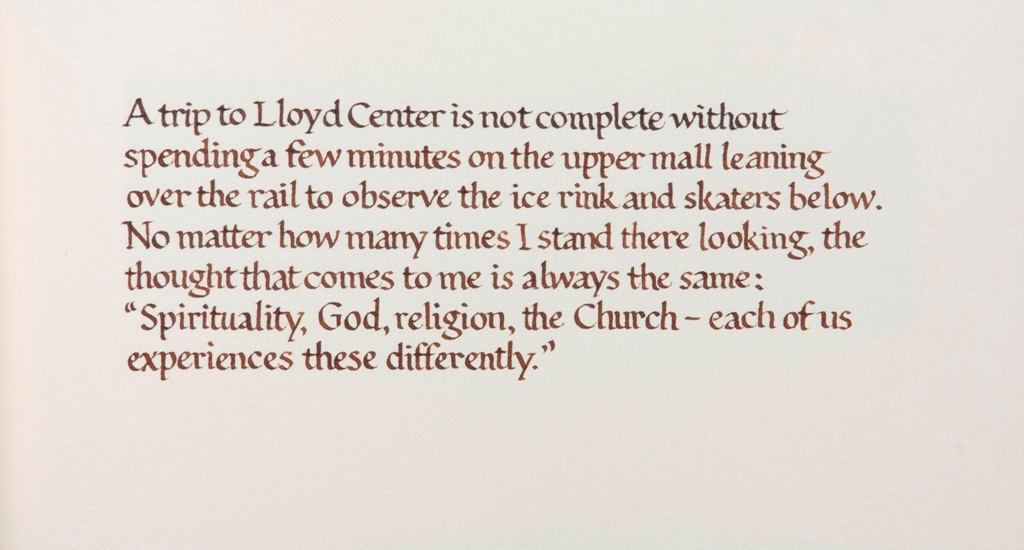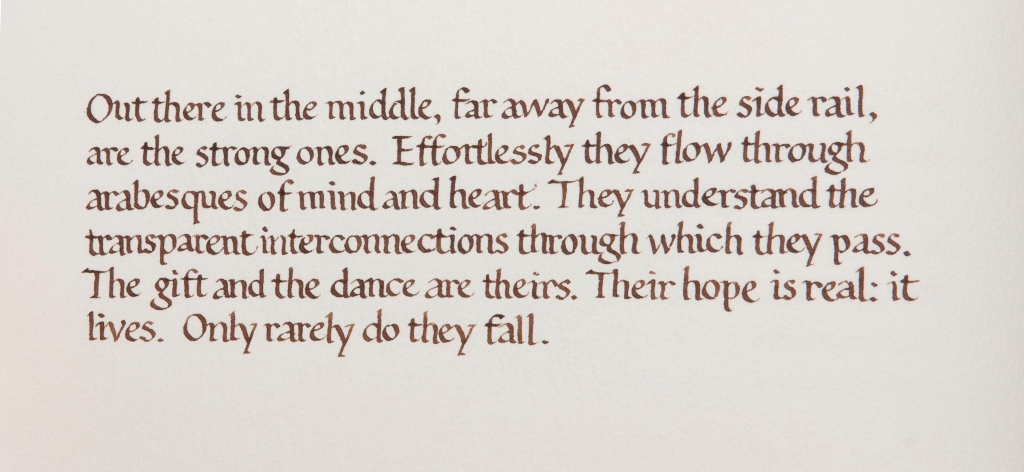Parable of the Seed
| “‘A farmer went out to sow. And as he sowed, some seed fell on the path, and the birds came and ate it up.Other seed fell on rocky ground where it had little soil. It sprang up at once because the soil was not deep. Then when the sun rose, it was scorched and it withered for lack of roots.Some seed fell among thorns, and the thorns grew up and choked it, and it produced no grain. And some seed, finally, fell on rich soil and produced fruit. It came up and grew and yielded thirty, sixty, and even a hundred times as much as had been planted.’
Having spoken this parable, he added: ‘Let whoever has ears to hear this, hear!'” Mark 4:3-9 |
A trip to Lloyd Center is not complete without spending a few minutes on the upper mall leaning over the rail to observe the ice rink and skaters below. No matter how many times I stand there looking, the thought that comes to me is always the same: “Spirituality, God, religion, the Church—each of us experiences these differently.”Out there in the middle, far away from the side rail, are the strong ones. Effortlessly they flow through arabesques of mind and heart. They understand the transparent interconnections through which they pass. The gift and the dance are theirs. Their hope is real; it lives. Only rarely do they fall.Then there are those who are rather like them, who are also out there in the middle but who fall much more often. Their resiliency is their strength. Quickly they are up on their feet again, and quickly their journey resumes.
Others move along at a much slower pace. Cautious and with little deviation in their patterns, they lack full participation. Their resistance in learning new steps and their subtle but erosive fear of life leave them stagnant for the most part and somewhat bored and boring. They are the most numerous of the skaters. Next are those who fall because they look only behind or at their feet and not toward what lies ahead. They can make it up on their feet again, but only with help and complaining, and always slowly. Then come the ones who, after an unpleasant incident or two, leave the rink altogether. Dissatisfied with the quality of the ice or with the teachers, with the management of the rink or with the rules, discouraged by the falls, and tired of waiting for distant promises, they depart. And over there along the fringes, almost unnoticed, are those who skate the sides. Slow step by slow step they cling to the railing at every point. Forced at times to take the ever so smallest step on their own, many of them slide right out one of the many exits that now and then break up the rail. Finally the spectators come into view—the ones who look on. Of these, only some are actually curious and ponder the meaning of the journey they are watching others take. Though they look, most do not see; pondering, most do not grasp. They may or may not move beyond the doubts or distractions, fears or pride or hurt that keep them from joining in, that keep them motionless, and leave them vulnerable to the chill of the ice that threatens tirelessly to come over them. September 1975 |
